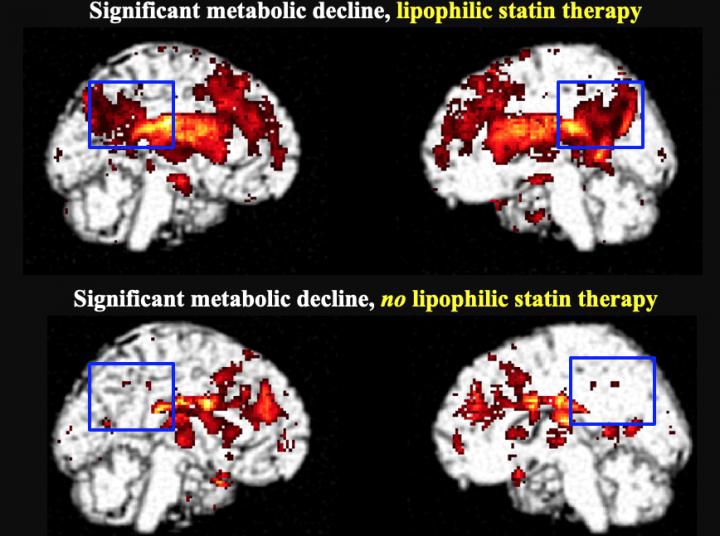PET Imaging Shows Increased Dementia Risk with Lipophilic Statins
Patients with mild cognitive impairment who take lipophilic statins have a more than doubled risk of progressing to dementia.
PET imaging shows lipophilic statin use by patients who are experiencing mild cognitive decline results is significant impacts on the posterior cingulate cortex, the area of the brain that is first affected by Alzheimer’s.
In research presented during the Society of Nuclear Medicine and Molecular Imaging 2021 Annual Meeting, investigators from the University of California at Los Angeles (UCLA) shared evidence that metabolism in this area of the brain is significantly reduced in this patient group. In fact, they face more than double the risk of developing dementia than do similar patients not taking the medication.
For more SNMMI 2021 coverage, click here.
While statins are the most widely used drugs in the developed world for lowering cholesterol and reducing heart attack and stroke risk, many studies have pointed to a higher risk associated with lipophilic statins because they are better able to cross the blood-brain barrier. To date, though, investigators have not been able to identify a direct link between the medication and cognitive decline.
Significant metabolic decline in the posterior cingulate cortex in lipophilic statin users after five to six years (top) compared to hydrophilic statin users and non-statin users (bottom).
Credit: Image created by Prasanna Padmanabham and Daniel Silverman, UCLA

“While some claim that statins protect users against dementia, others assert that they accelerate the development of dementia,” said Prasanna Padmanabham, lead study author and project head of statins and cognition in UCLA’s molecular and medical pharmacology student research program. “Our study aimed to clarify the relationship between statin use and subject’s long-term cognitive trajectory.”
Padmanabham’s team sought to clarify this relationship between a patient’s medication use and their long-term cognitive path. To do so, they compared 18F-FDG-PET scans that showed blood-brain barrier penetration in patients who used statins with moderate (atorvastatin) or high (simvastatin) lipophilicity to patients who either didn’t use statins or who used different ones. They also examined eight years of clinical data.
The team divided 392 patients with mild cognitive impairment into groups based on three parameters: baseline cognitive status, baseline cholesterol levels, and type of statin used.
During the eight-year timeframe, the team said, more patients in the lipophilic group progressed to dementia than did patients who were not taking statins – 24 percent and 10 percent, respectively. They saw no significant difference between patients taking other statins and those who didn’t.
Most significantly, they said, they were only able to identify a decline in posterior cingulate metabolism in patients using the lipophilic statins. Specifically, Padmanabham said, these results point to a more than double risk among lipophilic statin users for developing dementia.
Overall, the team said, their findings could point to a new use of PET imaging that could augment the knowledge base around the link between these medications and the aging brain.
“Findings from these scans could be used to inform patients’ decisions regarding which statin would be most optimal to use with respect to preservation of their cognition and ability to foundation independently,” Padmanabham said.
For more coverage based on industry expert insights and research, subscribe to the Diagnostic Imaging e-Newsletter here.